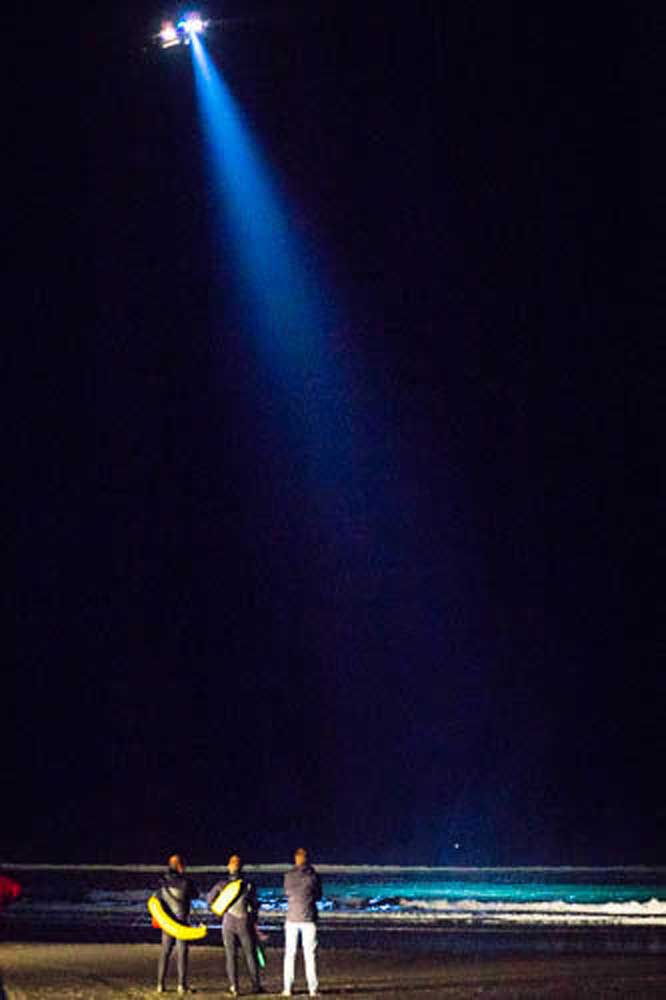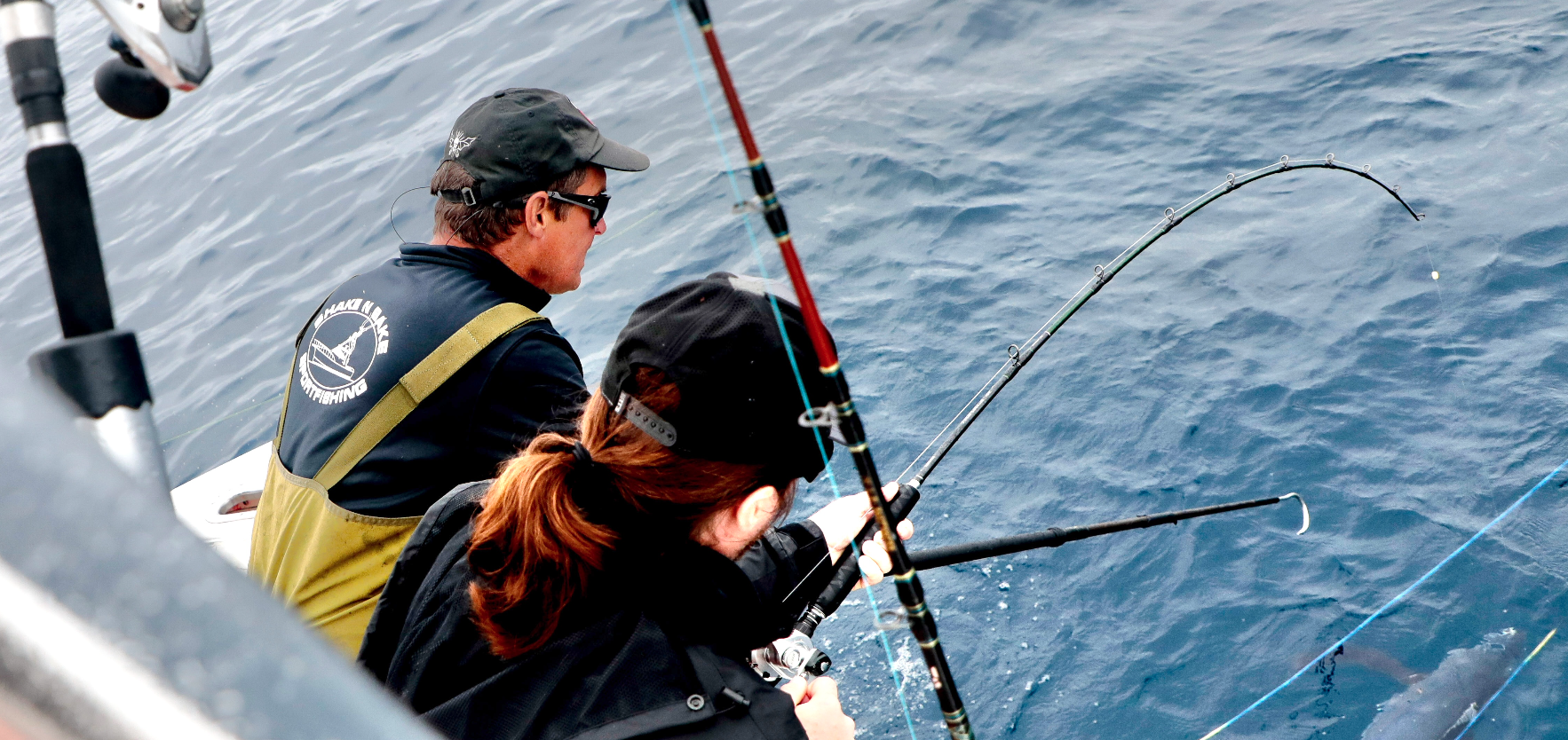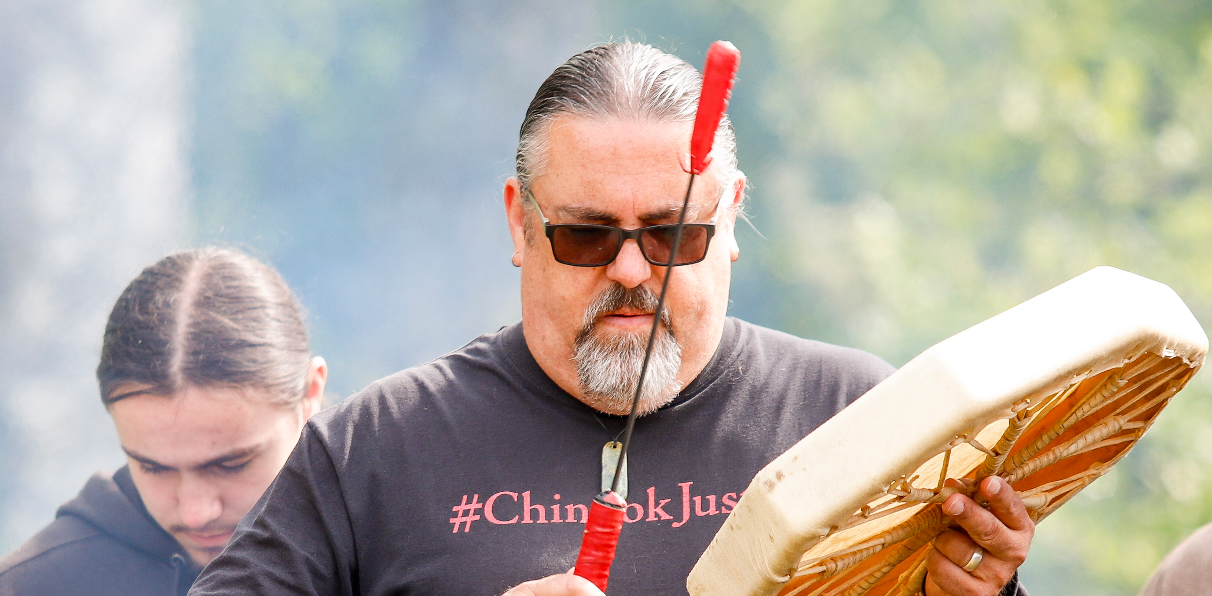Young Seattle woman drowns off Long Beach
Published 2:18 pm Friday, September 9, 2016

- Rescue responders scan the surf as a Coast Guard helicopter searches overhead for any signs of a woman who disappeared into the surf roughly 100 yards north of the Sid Snyder beach approach early Thursday morning.
LONG BEACH — Rescuers on Sept. 7 spent about four hours unsuccessfully searching for a young woman who disappeared in the surf roughly 100 yards north of the Sid Snyder beach approach after dark. She is presumed dead.
Trending
The victim, a 25 year-old woman from Seattle, has not been publicly identified, pending notification of her family. As of late afternoon on Friday, Sept. 9, her body had not yet been recovered. She was the second person to drown on the Peninsula this summer.
Police, fire, medical and surf rescue responders were first called to the beach at about 10:30 p.m. on Wednesday night, after a male friend, who was with the woman when she disappeared, called 911.
According to emergency responders, the man and woman were staying at the Adrift Hotel, on Sid Snyder Drive, and decided to go down to the beach sometime after dark. The man told responders that he and the woman decided to go for a dip in the ocean, probably at about 9:45 p.m. Within about 10 minutes of entering the water, the two became separated. The man, whom responders described as “tall,” searched for the petite woman in the waves, and called for her for about five to 10 minutes. However, the night was dark and overcast, and even if it had been clear, the sliver of crescent moon would have provided very little light, so visibility was extremely low. Responders say the man realized he needed to call 911, but had left his cell phone back in his hotel room. He ran back to the hotel, called 911, then returned to the beach, where he worked with responders.
Trending
Long Beach Police were first on the scene, followed quickly by a number of volunteer responders from South Pacific County Technical Rescue (surf rescue) and the Long Beach Volunteer Fire Department, who all arrived by about 10:40 p.m. Shortly after arriving, the local responders asked the U.S. Coast Guard station to send a boat, which was quickly dispatched from Station Cape Disappointment. At about the same time, a responder asked a dispatcher to notify emergency responders that they should send more trucks to the beach, if possible.
“We need all the spotters we can get,” the man said.
LBVFD Chief Matt Bonney coordinated the search effort on the ground, Surf Rescue founder Doug Knutzen coordinated his team’s response, and Tom Condit, commander of Station Cape Disappointment, also came to the scene to coordinate the USCG response. Washington State Parks, Pacific County Sheriff’s Office, Medix ambulance company, and other local police and fire agencies all assisted with the effort.
The incident started roughly 1.5 hours before a fairly low tide. At the time, the air temperature and water temperature were both between about 55 and 60 degrees. According to various internet sources, a healthy person who is in 50 to 60-degree water typically reaches the point of exhaustion or unconsciousness in one to two hours, but can sometimes survive for as long as six hours. However, with many hazards underwater, including rolling logs and “crab holes,” as well as a powerful, but invisible rip current, most of the Peninsula’s dozens of drowning victims have succumbed to the water within an hour or so.
In this case, the woman had likely been in the water for 30 minutes or more by the time help arrived. While the small waves likely appeared fairly harmless from shore, the low tide may have made it easier for the pair of friends to unwittingly venture near some hazards that are usually covered by much deeper water.
“I know right off of Sid Snyder, there are some pretty deep crab holes right there,” Knutzen said.
Around 10:45 p.m., a rescuer asked USCG to dispatch a search helicopter. USCG quickly sent an MH-60 Jayhawk helicopter from Sector Columbia River in Warrenton, which arrived at about 11 p.m. The helicopter, which was reportedly equipped with an infrared heat-sensing camera, as well as powerful search lights, continued to sweep back and forth over the water in widening circles for the remainder of the search effort. As the evening wore on, the helicopter began venturing farther north and south, a possible indication that responders were shifting from a rescue effort to a recovery effort.
When a Chinook Observer reporter and photojournalist arrived at the beach at roughly 11:45 p.m., two State Parks trucks, three large off-road trucks and a four-wheel-drive medical response truck from LBVFD, and other vehicles were on the beach. While a Coast Guard vessel used powerful lights to search in the water near shore, some responders rode slowly up and down the beach, and “spotters” stood on top of their vehicles, using binoculars to search for any hint of the woman. Around midnight, rescuers began firing a flare-gun every few minutes, to cast a brighter, bigger pool of light over the water. Around the same time, a low cloud-cover turned into a wet fog, further hindering the search effort.
In interviews on Sept. 9, Bonney, and Knutzen both said the response was robust and extremely well-coordinated. Knutzen said there was good communication between agencies. He praised a State Parks ranger, who helped by conducting searches at the hotel, dunes and elsewhere to be sure that the woman hadn’t made it out of the water. Knutzenalso praised a volunteer who sat with the woman’s friend and offered him counsel.
Bonney said about nine LBVFD volunteers came out to the beach, despite the late hour of the call.
“We had more eyes than binoculars,” Bonney said. “We were overstaffed, which was good, but it didn’t helped that much — it was so dark. The water was very dark.” Bonney also praised USCG, saying he felt the Coasties had gone above and beyond in their efforts to find the woman.
However, both men said that the nighttime conditions complicated the search effort. All emergency responders must follow strict safety protocols, and must carefully weigh the chances of a successful rescue against the potential danger to rescuers. This is especially true with water rescues, because the environment is especially unpredictable, and it is extremely difficult to keep track of water responders from land.
Knutzen said that SPCTR never sends swimmers into the water until they have spotted the victim. With so little light on Wednesday night, the chances of seeing the woman were already slim. And though SPCTR owns jet-skis, the vehicles do not have lights. It would have been extremely dangerous to send swimmers or jet-skis out into unlit water, Knutzen said, so they left the water search to the personnel on the 47-foot USCG boat.
However, Bonney said, even the Coast Guard’s high-tech tools have their limitations — heat sensors and search lights can’t penetrate more than a few inches under the surface of the dark water, which was filled with sand and silt.
With little chance of finding the woman amid the worsening weather conditions, rescuers suspended the ground search at about 12:40 a.m., and a convoy of emergency vehicles left the beach.
The USCG helicopter continued searching until about 2 a.m., and the USCG boat continued until about 3 a.m., when the fog made it impossible to continue. According to a statement from Coast Guard officials, a boat crew returned to the area at about sunrise, and stayed until about 9:30 a.m., when they made the difficult decision to suspend the search.
“Our thoughts go out to the family and friends of the missing woman,” said Capt. David Berliner, deputy commander, Coast Guard Sector Columbia River. “The decision to suspend a search and rescue case is the hardest decision I make as a leader and Coast Guardsman, but I also know our crews did everything they could have done to have a better outcome.”
On Sept. 9, responders said that it can take anywhere from days to weeks to recover the body of a drowning victim, and some never return to shore. Pacific County Coroner Mark McClain said officials will likely wait to see if the woman can be recovered before declaring her dead. In the meantime, PCSO is handling the investigation of the incident. The Chinook Observer requested an interview from a PCSO spokesman, but had not heard back from him at the end of the business day on Friday.
Bonney, a long-time fire volunteer who grew up on the Peninsula, said the incident had deeply affected many of the responders who helped out. He noted that some of the same people also responded to an early summer incident in which a middle school girl from Oregon drowned, and a summer 2014 incident in which a 10 year-old girl drowned and her younger brother narrowly survived.
“We feel it when we can’t recover someone. It’s always hard. It doesn’t matter how old they are. It sticks with you,” Bonney said. “… we feel for the family. We just want them to know they’re not alone in the loss.”
This is a breaking news story. The Chinook Observer will update the story as more information becomes available.









